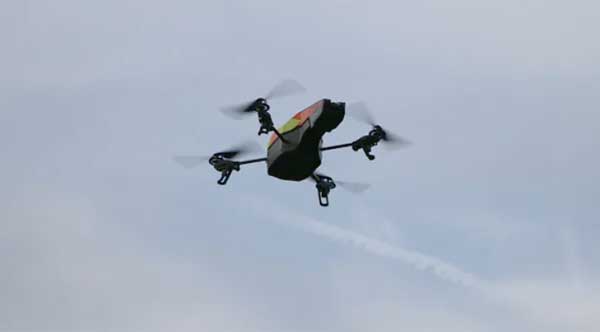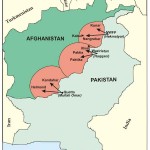
Years back Musharraf had said, “Osama-bin-Laden, Ayman-al-Zawahiri, Haqqanis are our heroes ….. We trained the LeT against India.” Sartaj Aziz, Advisor on Foreign Affairs to Pak PM Nawaz Sharif had told BBC, “Pakistan should not engage in a war with those (militants/terrorist) whose target is not Pakistan.” Yet, when current Pakistani PM Imran Khan told the Council of Foreign Relations, “The Pakistani Army, ISI trained al-Qaeda and all these troops to fight in Afghanistan”, our media termed it a “Big Admission”.
Imran perhaps was smug with the feel that Pakistan remains an asset for the US, given the recent jamboree in Houston to which India applauded Trump’s comments of fighting Islamic terrorism and guarding borders when Trump only meant Iran and the Mexican border.
Similar was the glee expressed when Imran told reporters in New York on September 24, “We can’t attack India. Clearly that’s not an option. Apart from that, we are doing everything possible.” But as Imran was deflecting attention from war, Pakistan had already opened the next chapter of asymmetric war against India – advent of drone war, that too with Beijing’s signatures.
Going by media reports, at least eight drone sorties, carrying a total of 80 kg of weapons (arms, ammunition and communication devices) were sent across the border into Punjab by Pakistan-based Khalistani terror groups between September 9 and 16; violating India airspace and delivering the load to a terror module of the revived Khalistan Zindabad Force (KZF) at Rajoke village near Khalra in Punjab’s Taran Taran District.
Punjab Police claims to have busted the above KZF module on September 22. Four KZF members arrested confirmed the drone drops from Pakistan. 5 x AK-47 rifles, 16 magazines and 472 rounds of ammunition, four Chinese-made .30 bore pistols, along with eight magazines and 72 rounds of ammunition; nine hand grenades, five satellite phones with ancillary equipment, two mobile phones, two wireless sets and fake currency with the face value of Rs 10 lakh were seized.
According to Punjab DGP Dinkar Gupta, “The weapons were suspected to have been delivered recently across the Indo-Pak border from Pakistan through drones launched by the Pakistani establishment, the Pak ISI and the state-sponsored Jihadi and pro-Khalistani terrorist outfits working under its command.”
Gupta added that the large-scale arms-infiltration appeared to have been aimed at scaling up terror and militancy in J&K, Punjab and the Indian hinterland, in the wake of the recent developments in J&K. According to Punjab Chief Minister Amarinder Singh’s office, KZF was conspiring to unleash a series of terrorist strikes in Punjab and adjoining states.
Terming the drone droppings just one of Pakistan’s “sinister designs” following the scrapping of J&K Special status under Article 370, Amarinder Singh urged Home Minister Amit Shah on September 24 to look into the matter first hand. He tweeted: “Recent incidents of Pakistan-origin drones dropping consignments of arms and ammunition, is a new and serious dimension of Pakistan’s sinister design in aftermath of Article 370. Request Amit Shah ji to ensure that this drone problem is handled at the earliest.” Amarinder also urged the Centre to direct the IAF and BSF to launch necessary counter-measures to check any further threat from drones to the border state – Punjab.
Amit Shah’s response is not known but media has quoted Defence Minister Rajnath Singh’s response to the drone threat by saying that the Indian Army, Air Force, and Navy are capable of “combating and defeating” any challenge to national security. While that is good as a general statement, it is a simplistic response to an acute asymmetric threat that has been staring India in the face past several years.
Punjab has handed over further investigations to the NIA and there are reports that the entire consignment, using the KZF, supported by ISI and orchestrated through Germany and Lahore was aimed ultimately to fuel terror attacks in J&K. The drones used were high-end Chinese-origin fitted with GPS, enabling drop location fed into them by the operator.
After dropping the loads, they returned to the pre-designated spot fed into their systems – just like a drone-taxi. These drones were possibly launched from locations two km inside Pakistan, covering a distance of five km, flying at 2,000 feet and then dropped off the weapons after descending to 1200 ft.
The payload was slung from the platform using Chinese mountaineering ropes. The drone making the last sortie crashed at Rajoke village near a border drain which is two km from the fencing on the international border with Pakistan, which brought the whole operation to light. The Chinese batteries of the burnt drone had been stripped off on instructions from Pakistan. The deliveries took place on four different dates, mostly between 9.30 pm and 10.30 pm with the drone making two sorties within an hour.
The Pakistani operation would perhaps have never come to light if the drone making the last sortie on September 16 had not crashed. All earlier drone sorties between September 9 and September 16 went unnoticed. This indicates the complexity of the problem with the vast IB and intervening distance of BSF posts. Have we catered for such threat by night? There has been no move whatsoever to arm the police and CAPF with drone monitoring equipment and anti-drone rifles, as foreign countries have done?
Are we banking solely on the IAF to detect and kill all drone activity along the IB, even if enemy starts flying drones at lower heights and through geographical gaps like rivers? When Imran said, “We can’t attack India…. Apart from that, we are doing everything possible”, we should be also prepared for drone-carrying bombs being used by terror modules, even as IAF bases are on alert and there is some input of possibility of use of a dirty bomb in J&K.
The EAM has stated that Pakistan occupied J&K (PoJK) will be assimilated into India someday, which is a perfect political statement. But some politicians and the army chief are creating the impression PoJK will be integrated with India tomorrow or in the very near future.
One needs to examine why General (later Field Marshal) Sam Manekshaw refused to enter West Pakistan when PM Indira Gandhi first wanted, and did it months later after due preparation. Besides, integrating PoJK is much different from integration of PoJK; involving capture, defending and administrating the region for keeps.
Most importantly, do we expect China to sit on the fence, like in 1971? Ironically, we are not even in a position to respond to drone attacks in the same vein. China produces 1000 drones every day and we don’t even make 100 in one year that too mainly assembled by private firms.
The recent crash of a DRDO UAV in South India indicates the pathetic state of the governmental defence-industrial complex. Its privatization was required years back but it falls on deaf ears since vote bank politics call the shots against the norms of good governance.
The Department of Defence Production (DoPD) staffed totally by bureaucrats with no technical expertise, unlike the Railway Board or ISRO stacked with domain experts. DoPD is more a vehicle for foreign jaunts with no accountability. How else does one explain that we can’t even produce a JATO booster for our RPVS in comparison to ISRO which is doing wonders in this field?
The China-Pakistan anti-India nexus is gaining momentum with rhetoric of India’s political and army establishing over integrating PoJK, rather than acting. It would not be surprising if the recent use of drones by Pakistan is on the advice of Beijing. To a visiting Pakistani delegation in 1960s, Chinese PM Zhou en-Lai had raised his fist and said that if one finger is cut off, it reduces the power of the punch by 50 percent. Drones henceforth should be expected to be part of Pakistan’s terror planning.
JeM’s Balakot terror training facility has been revived and terror launch pads are full. It is time to brag less and act more. It is obvious that radicals exist in Punjab, J&K and in some other parts of India and narcotics trade and hawala are running full steam. When ex R&AW officer NK Sood recently revealed that Sharad Pawar had close ties with D-Company head Dawood Ibrahim, it does not mean there no politicians in power have cross-border links. The amount of narcotics flooding Mumbai, Delhi, Punjab and J&K can’t be without politician-police patronage.
Khalistanis can simply walk across the Kartarpur Corridor once operational and receive the terror wherewithal through drones. Pakistan can use drones can be used across the entire length of IB anywhere, as also launched from fishing vessels/trawlers from the sea. Incidentally, an AK-47 can also be ordered online. AK-47s were reportedly available in Gaffar Market of Karol Bagh few years back.
For that matter, in April 2019, the Munger Police recovered 14 x AK-47 rifles in Munger’s Mirzapur Bardhe village alone. Anything is possible in a chaotic democracy like ours, even drone attacks from within India, especially with rise in numbers of law makers with serious criminal charges against them. It is time to face the threats keeping the rhetoric aside.




